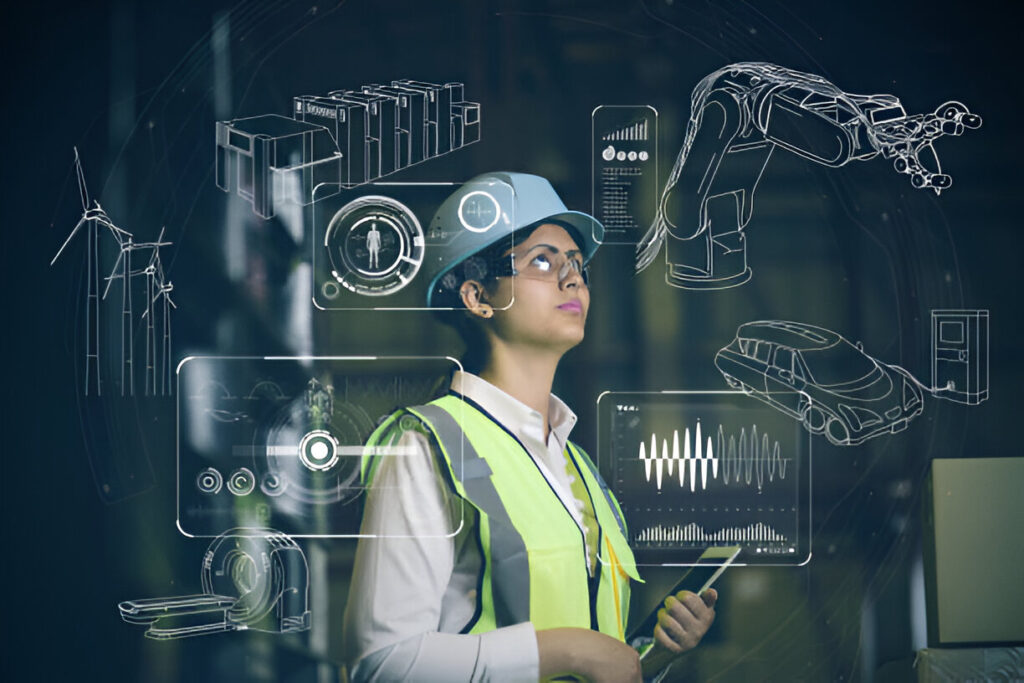Emerging trends in the manufacturing sector
The manufacturing sector is on the cusp of a significant transformation as we move into 2024. Technological advancements, environmental considerations, and the ongoing evolution of consumer demands are driving unprecedented changes. To stay competitive, manufacturers must be agile, innovative, and forward-thinking. In this blog post, we’ll explore the top five emerging trends in the manufacturing sector that are set to shape the industry in 2024.
1. Adoption of Industry 5.0: Human-Centric Manufacturing
Industry 5.0 is rapidly gaining momentum as the next evolution of industrial practices. Unlike Industry 4.0, which emphasized automation and smart manufacturing through IoT, AI, and robotics, Industry 5.0 focuses on the collaboration between humans and machines. This trend represents a shift towards human-centric manufacturing, where advanced technologies work alongside skilled workers to create more personalized, high-quality products.
- Personalization and Customization: The demand for customized products is increasing. Industry 5.0 allows manufacturers to offer bespoke solutions without compromising efficiency. By leveraging AI and robotics, manufacturers can produce customized products at scale, meeting specific customer needs while maintaining cost-effectiveness.
- Enhanced Workforce Productivity: Industry 5.0 emphasizes the augmentation of human capabilities. Workers are equipped with advanced tools such as exoskeletons, AR glasses, and collaborative robots (cobots) that enhance their efficiency and reduce the physical strain of labor-intensive tasks.
- Sustainability: This human-centric approach also aligns with sustainability goals. By optimizing processes and reducing waste, Industry 5.0 contributes to more sustainable manufacturing practices.
For more insights on how Industry 5.0 is shaping the future, check out this detailed guide on Industry 5.0.
2. Sustainable Manufacturing: A Green Revolution
Sustainability is no longer a choice but a necessity. As environmental concerns continue to rise, manufacturers are under increasing pressure to adopt sustainable practices. The shift towards green manufacturing is being driven by both regulatory requirements and consumer demand for eco-friendly products.
- Circular Economy: One of the most significant trends in sustainable manufacturing is the adoption of the circular economy model. This approach emphasizes the reduction, reuse, and recycling of materials to minimize waste and resource consumption. Manufacturers are investing in technologies that enable them to reclaim materials from end-of-life products and reintegrate them into the production process.
- Energy Efficiency: Another key focus area is energy efficiency. Manufacturers are increasingly adopting renewable energy sources such as solar, wind, and hydropower to reduce their carbon footprint. Additionally, the implementation of energy-efficient processes and equipment is helping to lower energy consumption across the production cycle.
- Sustainable Supply Chains: The sustainability trend extends beyond the factory floor to the entire supply chain. Companies are working to ensure that their suppliers adhere to sustainable practices, from sourcing raw materials to delivering finished products.
For manufacturers looking to stay ahead, adopting sustainable practices is crucial. Explore how sustainable manufacturing can benefit your business.
3. Digital Twins: Revolutionizing Production
The concept of digital twins is revolutionizing the manufacturing industry by providing a virtual replica of physical assets, processes, or systems. These digital replicas allow manufacturers to simulate, analyze, and optimize production processes in real time, leading to significant improvements in efficiency and cost-effectiveness.
- Predictive Maintenance: Digital twins enable predictive maintenance by monitoring the health of machinery and equipment in real time. By analyzing data from sensors, manufacturers can predict when a machine is likely to fail and perform maintenance before a breakdown occurs, reducing downtime and repair costs.
- Process Optimization: By simulating production processes, digital twins help manufacturers identify bottlenecks, optimize workflows, and improve product quality. This capability is particularly valuable in industries where precision and consistency are critical.
- Product Development: Digital twins also play a crucial role in product development. Manufacturers can test new designs and processes virtually, reducing the need for physical prototypes and speeding up the time-to-market for new products.
As digital twins become more sophisticated, their impact on manufacturing will only grow. Learn more about the role of digital twins in modern manufacturing.
4. Artificial Intelligence and Machine Learning: Smarter Manufacturing
Artificial intelligence (AI) and machine learning (ML) are becoming integral to the manufacturing sector, driving innovation and efficiency. These technologies enable manufacturers to make data-driven decisions, automate complex processes, and enhance product quality.
- Predictive Analytics: AI and ML are revolutionizing the way manufacturers approach data analysis. Predictive analytics powered by AI allows manufacturers to forecast demand, optimize inventory levels, and reduce waste. By analyzing historical data, AI can identify patterns and trends that help manufacturers make informed decisions.
- Quality Control: AI-driven quality control systems are becoming more prevalent in manufacturing. These systems use machine vision and deep learning algorithms to inspect products for defects in real time, ensuring that only high-quality products reach the market.
- Supply Chain Optimization: AI is also transforming supply chain management. By analyzing data from suppliers, logistics providers, and market trends, AI can optimize the entire supply chain, reducing costs and improving delivery times.
The integration of AI and ML into manufacturing processes is set to drive significant efficiencies and innovations in 2024. Discover how AI is transforming the manufacturing industry.
5. Reshoring and Regionalization: Rethinking Global Supply Chains
The global supply chain disruptions caused by the COVID-19 pandemic have forced manufacturers to rethink their sourcing and production strategies. As a result, reshoring (bringing production back to domestic locations) and regionalization (setting up production facilities closer to key markets) are emerging as Emerging trends in the manufacturing sector
- Risk Mitigation: By reshoring and regionalizing production, manufacturers can mitigate risks associated with global supply chains, such as geopolitical tensions, trade tariffs, and transportation disruptions. This shift allows companies to have greater control over their production processes and reduces reliance on distant suppliers.
- Cost Efficiency: While reshoring may seem costlier due to higher labor costs in domestic markets, advances in automation and robotics are helping to offset these costs. Additionally, regionalization can lead to lower transportation costs and faster delivery times, making it a financially viable option.
- Customer Proximity: Regionalization brings manufacturers closer to their customers, allowing for faster response times and more tailored products. This proximity also supports sustainable practices by reducing the carbon footprint associated with long-distance shipping.
As manufacturers navigate the challenges of a post-pandemic world, reshoring and regionalization are becoming increasingly attractive strategies. Learn more about the benefits of reshoring in manufacturing.
Conclusion
The manufacturing sector is poised for significant transformation in 2024, driven by advancements in technology, sustainability imperatives, and shifting global dynamics. Industry 5.0, sustainable manufacturing, digital twins, AI and ML, and reshoring are the top trends that will shape the future of manufacturing. By staying ahead of these trends, manufacturers can position themselves for success in a rapidly changing landscape.
For manufacturers looking to stay competitive, it’s essential to embrace these trends and invest in the technologies and practices that will define the industry’s future. As the manufacturing sector evolves, those who are agile and forward-thinking will lead the way into the next era of industrial innovation.
If you’re interested in learning more about how these trends can benefit your business, visit to us on the Emerging trends in the manufacturing sector




